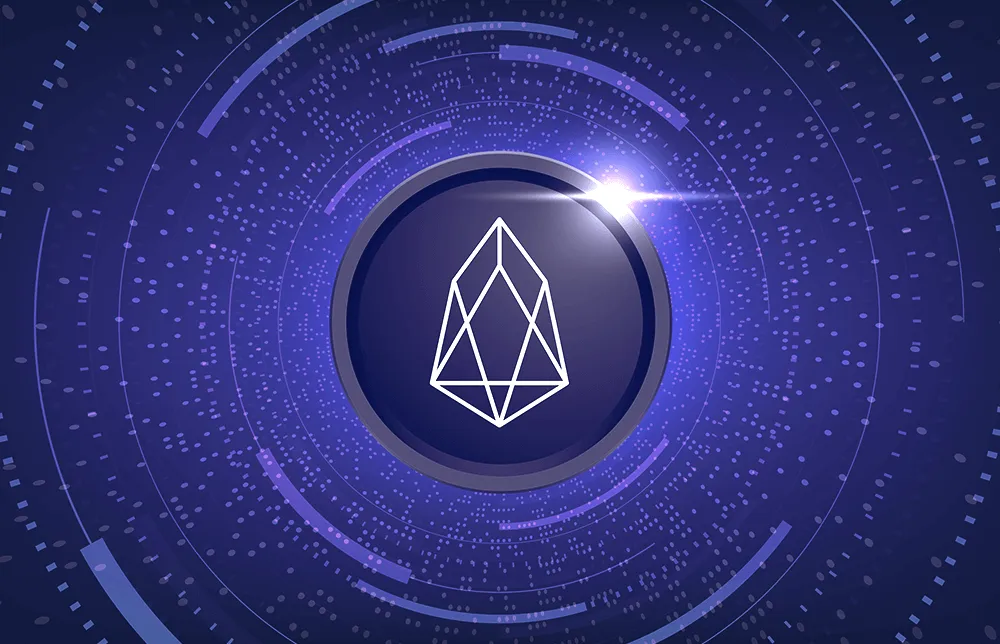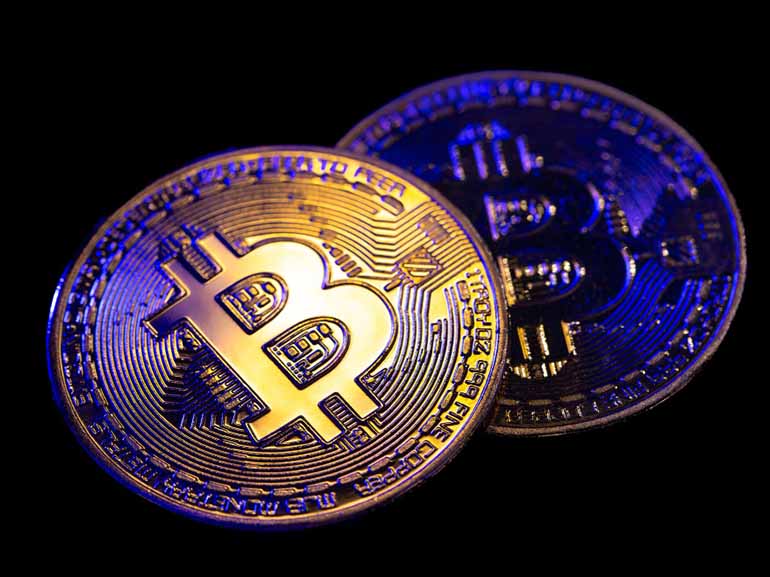Vaulta Crypto Trading Guide: How to Trade the AUSD
Date Modified: 12/10/2025
Vaulta is a leading blockchain platform designed for the development of decentralised applications. Its enhanced speed, scalability, and developer efficiency make it often considered a superior alternative to Ethereum.

Main points:
- Vaulta offers a secure environment for dApps that is more user- and business-friendly than traditional blockchains like Ethereum.
- Vaulta uses a Delegated Proof of Stake (DPoS) consensus mechanism system for efficient transactions and network security.
- In 2017, Vaulta launched one of the largest initial coin offerings (ICOs) in history, raising $4.2 billion.
- Traders can speculate on Vaulta's price movements without owning any piece of the token by trading AUSD CFDs with Plus500.
What Is Vaulta Cryptocurrency?
Vaulta is the native token of the Vaulta blockchain which offers a secure environment for decentralised applications (dApps) and provides features like authentication, data hosting, usage management, permissions, and seamless communication between dApps, the internet and the entire Web3 ecosystem.
The Vaulta blockchain's primary aim is to address traditional blockchains' limitations, such as in Bitcoin and Ethereum, by offering a more accessible and business-friendly platform for developers through horizontal scaling. Similar to Google's Play Store and Apple's App Store, the Vaulta blockchain functions as a centralised platform for decentralised applications.
The blockchain-native token Vaulta serves as a medium of exchange, a means of purchasing resources (servers, bandwidth, and storage) on the Vaulta blockchain network, and is also used for trading and investment purposes.
An Overview of the Vaulta Blockchain Network
The Vaulta blockchain network was built independently on the VaultaIO infrastructure. VaultaIO is a public blockchain platform with a layered transaction structure and customisable smart contracts. Its infrastructure enables developers to create, host, and execute commercial-scale decentralised applications (dApps).
The VaultaIO website domain "Vaulta.IO" is like an online hub that houses all the necessary tools and information, including resources, instructional guides, and software details, needed to build decentralised applications (dApps) on the VaultaIO platform. This approach enables businesses and individuals to create dApps with a similar level of ease as traditional web applications.
How Does Vaulta Work?
Consensus Mechanism: The Vaulta blockchain operates primarily through a delegated proof of stake (DPoS) consensus mechanism, where 21 block producers are elected to approve transactions and secure the network.
Block Producers & Voting: Token holders elect block producers based on their voting power, which is determined by the number of Vaulta tokens they hold. Only 21 block producers can create blocks within a period of three seconds, and underperforming producers can be replaced.
Resource Allocation: Resources such as RAM for storage, CPU for processing power, and NET for network bandwidth, are essential for transactions to occur on the network. Block producers on the network can gain access to these key resources based on the amount of Vaulta tokens they own or stake.
Multiple Blockchains: The network supports sidechains, which run parallel to the main blockchain. This allows dApps to function smoothly and increases the system's scalability and efficiency. As such, the Vaulta network achieves a high transaction rate (thousands per second) without on-chain fees.
Decentralised Operating System: Unlike Ethereum, which is often described as a decentralised supercomputer, Vaulta is more akin to a decentralised operating system, providing a platform for scalable and efficient application development.
The History of Vaulta Cryptocurrency
Vaulta Development: Block.one, a blockchain software company led by former CTO Daniel Larimer and CEO Brendan Blumer, began developing EOSIO in 2017. The EOSIO platform was released to the public as open-source on 1 June 2018.
Vaulta ICO: Block.one conducted a year-long initial coin offering (ICO) on 26 June 2017, raising $4.2 billion, one of the largest ICOs in history. The ICO distributed 1 billion EOS tokens over nearly a year:
- 200 million tokens (20%) were released from 26 June to 1 July 2017.
- 700 million tokens (70%) were gradually distributed in 350 batches, with 2 million tokens released every 23 hours, starting 1 July 2017.
- 100 million tokens (10%) were reserved for Block.one.
Vaulta Price Performance: EOS ICO was priced at $5 on 26 June 2017 and reached an all-time high (ATH) of $22.89 on 29 April 2018 but has since experienced a downward price trajectory.
Legal Issues: Block.one faced a legal settlement in 2019 with the US Securities and Exchange Commission for $24 million over an unregistered ICO, and a 2020 class-action lawsuit settled for $27.5 million.
Post-Legal Developments: In 2021, the EOS Network Foundation was established, and the community voted to suspend token transfers to Block.one.
Vaulta Tokenomics: In 2024, the EOS community implemented changes to its tokenomics for the long-term stability and growth of the EOS ecosystem. This included limiting the total supply to 2.1 billion tokens and introducing a four-year halving cycle for staking rewards.
Factors Affecting Vaulta Cryptocurrency
Investor Sentiment: Positive news about Vaulta's adoption and real-world use cases can drive its prices higher, while negative news can lead to Vaulta declines.
Network Adoption: Increased adoption of the Vaulta network by dApp developers and companies can drive up the value of Vaulta cryptocurrency. At the same time, a lack of interest or increased regulatory scrutiny can depress prices.
Token Supply and Circulation: Vaulta is an inflationary token with a supply increase of 5% per year. This can deter investors, as assets with capped supplies are often preferred for long-term gains. However, high demand can still drive price growth despite the increasing supply.
Competitive Position: Vaulta competes with other cryptocurrencies, especially Ethereum. Vaulta's advantages include high scalability and feeless transactions compared to Ethereum's slower speeds and higher gas fees. Gaining traction among DApp developers from competitors can positively impact Vaulta's value.
How to Trade Vaulta CFDs
Unlike buying Vaulta tokens on a cryptocurrency exchange or digital wallet in anticipation that their price will appreciate, Trading Vaulta Contract for Differences (CFDs) allows you to profit and lose from the rising and falling prices of Vaulta coins without owning the coin itself. Plus500, for instance, allows you to open either long or short positions on A/USD CFDs to potentially profit or lose from either price increases or decreases. Trading AUSD CFDs also involves the use of leverage, allowing traders to gain greater exposure to the underlying asset with less capital. However, leverage also increases the risk of greater losses.
Vaulta Trading Hours
Unlike stocks and forex, the cryptocurrency market operates 24/7, providing continuous opportunities for traders to get exposure on price movements. On CFD platforms like Plus500, Vaulta CFD trading* is available 24 hours a day, seven days a week, including weekends (except a one-hour break on Sundays).
*Please note that trading hours may vary depending on the platform provider.
Steps to Buy and Sell Vaulta CFDs
To trade AUSD CFDs with Plus500, follow these steps:
- Open a trading account with Plus500.
- Navigate the platform's interface and explore its comprehensive trading tools.
- Search for the "A/USD" pair in the list of available cryptocurrencies.
- Assess the A/USD price trends using technical indicators and fundamental insights.
- Based on your market analysis, choose the number of CFD contracts to buy or sell.
- Set up your risk management targets, such as stop-loss and take-profit levels.
- Review and confirm your trade.
Conclusion
Vaulta, a blockchain platform known for its scalability and decentralised applications, has gained substantial adoption and partnerships within the blockchain space. Traders can gain exposure to the price movements of the native token, Vaulta, without holding the actual coin by trading AUSD CFDs. This can be done through CFD trading platforms rather than traditional cryptocurrency exchanges.
Consider opening a demo or live account with Plus500 to start trading Vaulta CFDs.
FAQs
Yes. Vaulta is a utility token because it gives holders access to the services and resources the Vaulta blockchain platform provides.
Vaulta can also be considered a security token because it serves as a means of exchange with other cryptocurrencies and currencies.
The risk of storing Vaulta cryptocurrency lies in the potential for cyber theft, as exchanges or online wallets can be hacked, leading to the loss of funds.
As of September 2024, Vaulta is worth a market capitalisation of approximately $700 million.
Vaulta handles 1,157 transactions per second with 100 million daily transactions and low fees of $0.0045. In contrast, Ethereum processes 12 transactions per second, 1.01 million daily, with higher fees of $0.71. Vaulta is faster and cheaper, while Ethereum is slower and more expensive.
Related News & Market Insights
Get more from Plus500
Expand your knowledge
Learn insights through informative videos, webinars, articles, and guides with our comprehensive Trading Academy.
Explore our +Insights
Discover what’s trending in and outside of Plus500.
Stay up-to-date
Never miss a beat with the latest News & Markets Insights on major market events.


